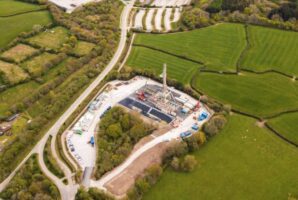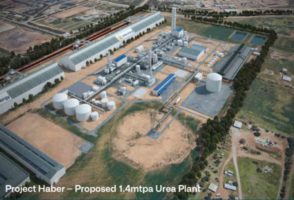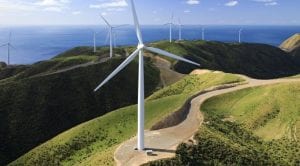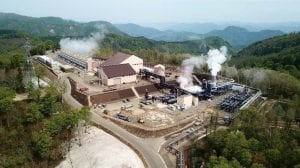The New Zealand Labour party has committed to an accelerated transition to 100 per cent renewable electricity, bringing the target forward to 2030 as part of the party’s pitch to voters ahead of an October election.
New Zealand prime minister, and Labour leader, Jacinda Ardern said that the party would bring forward the 100 per cent renewable electricity target by five years, along with an investment push to electrify New Zealand’s transport and industrial sectors.
The policy platform will include almost $120 million in additional funding for clean energy research and support for industries to decarbonise, as well as a nation-wide roll-out of hydrogen refuelling stations to support the uptake of zero emissions vehicles.
“Labour is planning properly for New Zealand’s future energy needs. We need to take steps right now and also plan 30 years ahead to ensure New Zealand has stable, sustainable and affordable energy while also protecting jobs and industries. This policy does that,” Ardern said.
New Zealand already produces a significant proportion of its electricity from renewable sources, with large existing developments of hydroelectric plants, along with contributions from wind and geothermal power stations.
NZ Labour energy spokesperson, Megan Woods, said that a re-elected Labour government would work to accelerate the phase out of the remaining coal and gas generators, and would see the country join an exclusive international club of nations using 100 per cent renewable electricity.
“We are setting ourselves the new goal of 2030, five years earlier than our previous goal, for us to become one of the few nations in the world with 100 per cent renewable electricity,” Labour energy spokesperson Megan Woods said.
“New Zealand produces 84 per cent of its electricity from renewable sources now, but we can do better. We will stop activities that increase our emissions by, for example, banning new thermal baseload generation; and promote clean energy development.”
Ardern has led a coalition within the New Zealand parliament, working with the centrist NZ First party and the NZ Greens to form government since 2017. Under this partnership, New Zealand has adopted more ambitious climate change policies, including a legislated commitment to zero net carbon dioxide emissions by 2050.
New Zealanders will vote on 17 October to elect a new national government, with polls suggesting the Ardern government is a very strong chance of being re-elected, potentially with an outright majority.
Ardern said that the accelerated push into renewable electricity would be part of a wider economic response to Covid-19, saying that NZ Labour recognised that investment in clean energy would also be an effective way to create new jobs.
“The COVID-19 economic recovery represents a once in a generation opportunity to reshape New Zealand’s energy system to be more renewable faster, affordable and secure,” Ardern said.
“Investment in renewable energy is also jobs rich. Our plan will creating new jobs and develop the high skill workforce our future economy needs to thrive.”
“Labour’s Clean Energy Plan is a critical element of Labour’s wider COVID-19 recovery plan that will both prepare New Zealand for the future while boosting jobs and the economy now,” Ardern added.
Labour has committed $70 million to fund additional preparatory works for a massive new pumped hydro energy storage project at Lake Onslow, which could provide as much as 5,000GWh of energy storage, matching all storage in New Zealand’s existing hydroelectric schemes.
Labour’s clean energy election pledge includes commitments include the establishment of a $70 million fund to assist industrial energy users in decarbonising their operations and $20 million Renewable Energy Research Platform, a $27 million Are Ake New Energy Development Centre and the roll out of a national hydrogen refuelling network.
“A great example of work we can do to become a world leader is the development of a green hydrogen industry. We can produce some of the cleanest green hydrogen in the world, and potentially receive a premium for it in international markets. We are already working with other countries including Japan and have invested in a nation wide fuelling network and will invest $10 million in a roadmap and further opportunities,” Megan Woods said.
“Our plan for clean energy and lower carbon emissions will help us seize the economic opportunities of being the clean, green country that New Zealanders see ourselves as being and that we can market ourselves as,” Woods added.
The announcement follows the release of the election platform of the NZ Greens, which also would set a 2030 deadline for a shift to 100 per cent renewable electricity, as well as a complete phase out of coal use by 2030, and an end to gas use by 2035.
Labour’s coalition partner, the centrist NZ First party, and the conservative opposition NZ National party have yet to release a clean energy policy.










